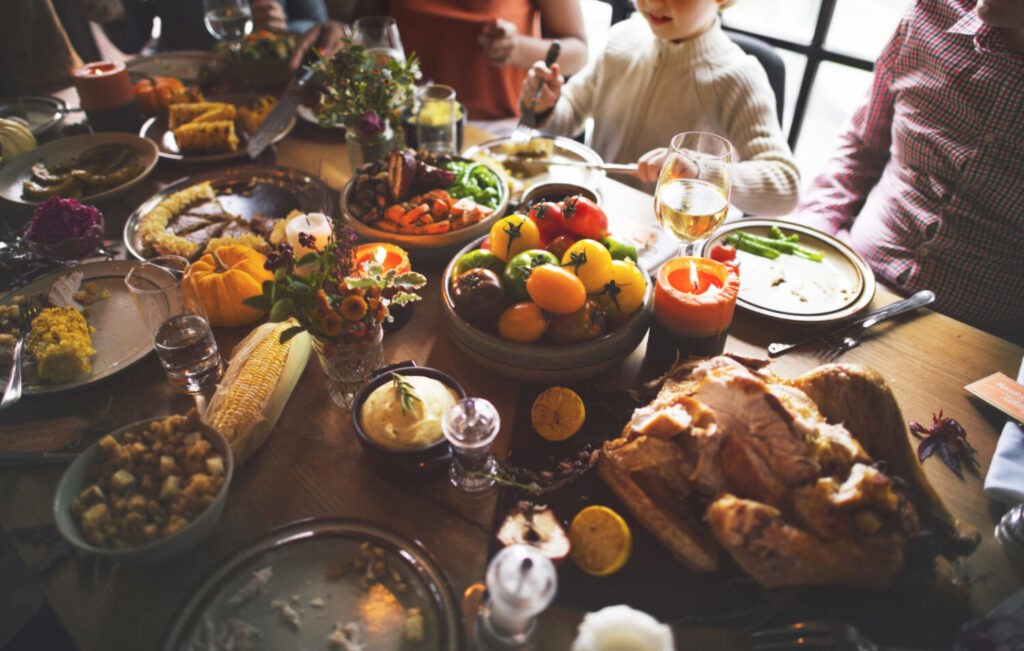Teaching children where their food comes from at Thanksgiving
What happens when you want to teach children about food and where it comes from, but you’ve lived in the city all your life and have little to no farming background? (Guilty as charged!)
If this…

What happens when you want to teach children about food and where it comes from, but you’ve lived in the city all your life and have little to no farming background? (Guilty as charged!)
If this seems a little daunting, it doesn’t have to be. Taking on the challenge can lead to some amazing discussions and discoveries along the way. And what better time to discuss food than at Thanksgiving, when mealtime plays such a key part in the celebration?
These simple strategies can help children understand more about how all that food arrived on the table – and the many procedures that made this possible!
1. Use read-aloud books to inspire their imagination.
A fantastic example of a read-aloud food tracking book is Marjorie Priceman’s How to Make an Apple Pie and See the World. Using whimsy and wit, this picture book follows the journey of an intrepid young lady who travels the world to find only the freshest ingredients for her apple pie. That includes scraping the bark off a cinnamon tree in Sri Lanka!
These other books can help introduce farming from a young age:
- Right This Very Minute: A Table-to-Farm Book About Food and Farming by Lisl H. Detlefsen
- Barnyard Kids: A Family Guide for Raising Animals by Dina Rudick
- On the Farm, at the Market by G. Brian Karas
As your children grow older, they may want to read more informative books about specific topics such as dairy farming, crop rotation, etc. Reading these books together can help you stay connected with their changing interests and strengthen your relationships with your children.
2. Explore growing plants and gardening at your comfort level.
This doesn’t have to mean mapping out your future homestead or preparing a garden plot with several beds all at once!
A simple science experiment and introduction to plants involves growing carrot sprouts in something as simple as a dish of water. Once you trim the carrot to just the top part of the stem (about an inch long), place it in a dish full of water and then leave near a sunny window. In a few days, roots will begin to sprout from the bottom part of the stem end to produce a lacy, green houseplant.
As your confidence grows, you can also check out other tools such as container gardening and picking a plant that’s already mature and growing from a nearby garden nursery.
3. Visit local farms or agricultural producers.
Farmers markets, community supported agriculture (CSA) programs, and farm field trips can take the most time and planning of all these tips, but the investment is well worth it!
These one-on-one connections with farmers and producers will create powerful memories and experiences for your children. They also help introduce your children to the idea of seasonal harvesting – e.g. strawberry picking in the spring, berry picking in the summer, and apple or pumpkin picking in the fall.
Also begin to look for field work on drives in rural areas. Ask questions such as,
- Is the farmer preparing, planting, or harvesting the field?
- What kind of crop is being planted or harvested?
- What uses does a particular crop have for people, animals, and society?
Over time, you’ll notice patterns. For example, in the Midwest, after soybeans are harvested in the fall, the field is often prepared to plant corn, which benefits from the nitrogen produced by the bean plants. You’ll also see white tanks filled with anhydrous ammonia being pulled in fields to give the soil extra nitrogen for the next season’s corn crop.
Other field trip ideas include beekeeping tours, pumpkin patches, cattle ranches, and tractor rides.
Depending on your comfort level, you may also want to consider buying directly from farmers, thus eliminating middleman costs. An increasing number of families are buying products such as farm-fresh beef, milk and dairy products, and homemade goods from farms on predetermined delivery schedules.
By implementing these steps at your own pace, you can help and your children can gain a greater appreciation for national food production and all the processes involved – from green bean casseroles to pumpkin pies, and everything in-between!



